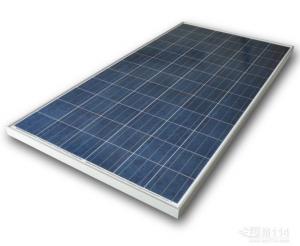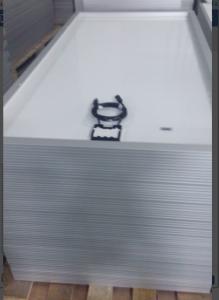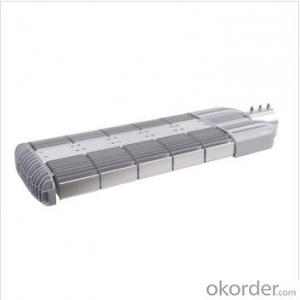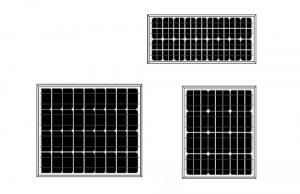Phono Solar Panels - High-Efficiency 260W Polycrystalline Solar Panel
- Loading Port:
- Shanghai
- Payment Terms:
- TT OR LC
- Min Order Qty:
- 100 watt
- Supply Capability:
- 10000 watt/month
OKorder Service Pledge
OKorder Financial Service
You Might Also Like
Specification
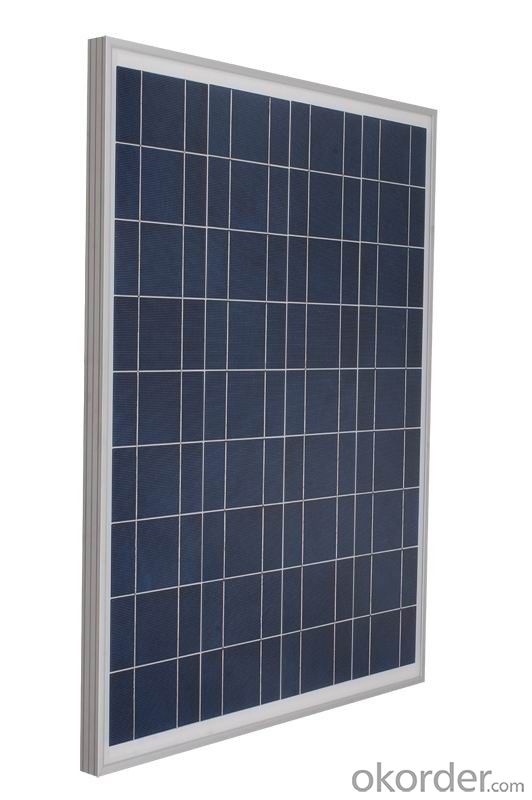
Product Description
260W Poly Crystalline Solar Panel
Product Highlights:
1. Guarantee positive power tolerance (0~+3%)
2. Module can bear snow loads up to 5400Pa and wind loads up to 2400pa
3. High performance under low light conditions (cloudy days, mornings and evenings)
4. Certified by Europe standards of TUV, IEC, CE and British MCS and AUS CEC
5. OEM/ODM available
Specs
| Electrical Characteristics | |
| Maximum Power [Pmax] | 260W |
| Power Tolerance | +/-3% |
| Maximum Power Voltage [Vmp] | 30.5V |
| Maximum Power Current [Imp] | 8.53A |
| Short-Circuit Current [Isc] | 8.81A |
| Open-Circuit Voltage [Voc] | 37.7V |
| Module Efficiency | 15.98% |
| Max. System Voltage | 1000VDC |
| Cell Size and Series | Poly 156*156 60pcs (6*10) |
| Temperature Coefficient of Pmax | - 0.47% / º C |
| Temperature Coefficient of Voc | - 0.33% / º C |
| Temperature Coefficient of Isc | 0.05% / º C |
| Mechanical Characteristics | |
| Dimension (mm) | 1640*992*40 |
| Frame | Anodized Aluminium Alloy |
| Glass | 3.2mm,High Transmission,Tempered Glass |
| Junction box & Cable | IP65 Rated weatherproof connectors Cable: TUV 1x4.0mm2 / UL12AWG,Length:900mm |
| Weight | 19.0Kgs |
Industry-leading Warranty:
Warranty on material and workmanship: 10 years
Guaranteed output of 90% after 12 years and 80% after 25 years.
- Q: I need to power a series of meraki wireless repeaters that plug into a standerd wall outlet. consuming 5v or .08 amps However I need this in a remote location (like out in the middle of nowhere) Using A solar panel as power supply and a battery to store the energy but, how and what do I use to convert the energy coming from the solar panel to the battery and the batteries power supply to match the needs of the meraki wireless repeater? How do I make this as compact as possible? Do I need a ac/dc converter? or dc/ac converter? Any suggestions or solutions would be great !
- Search the web for some of the inexpensive solar Cell Phone Chargers. They can be hooked in series or parallel as needed to get you teh voltage and current needed. The 80mA is not too tough, thats not much current. Suggestion is to use a battery that is constantly trickle-charged by the solar panel. This will assure operation on a cloudy day or at night. Another strange source for solar panels and solar charge systems is, believe it or not, Harbor Freight Tools. they are on the web as well as have stores all over.
- Q: Can solar panels be installed on a data center or technology facility?
- Yes, solar panels can be installed on a data center or technology facility. Installing solar panels not only helps reduce the environmental impact of these facilities but also provides a sustainable and renewable source of energy. By harnessing the power of the sun, data centers and technology facilities can offset their electricity consumption and potentially even generate surplus energy. This can contribute to cost savings and a greener, more sustainable operation.
- Q: On how to connect a solar panel to a battery and then to a lightbulb,the project is offgrid..
- Hi Igor, this is a very simplified version of the system I'm implementing in my shed. I used a guide found on an Answers! member's website, you may find what you're looking for there. Check out the sources section.
- Q: How much solar energy does a 2m by a 3m solar panel convert to energy on a sunny day? Assume that the solar cells are 30% efficient.I'm not looking for the answer so much as I need an explanation o how to solve this type of problem... Thanks!!
- You have the area of the solar panel. You know their efficiency. What you need to know now is the energy (per area) delivered by the sun. The energy delivered by the sun can be found on the internet. Earth ,43 – ,32 W/m? (wikipedia) That is offcourse for your solar panels perpendicular to the ray's of the sun. If they are under an angle you should see what the area of the projecton of your solar panel is on a plane perpendicular to the ray's of the sun. So know you have the intensity W/m? and an area (or effective area). Here you go the energy deliverd by the sun. And 30% of it is what you get out of your panels.
- Q: Can solar panels be used in areas with high levels of pollution from industrial activities?
- Yes, solar panels can be used in areas with high levels of pollution from industrial activities. While pollution can potentially reduce the efficiency and performance of solar panels, they can still generate electricity even in polluted environments. However, regular maintenance and cleaning of the panels may be required to ensure optimal performance.
- Q: I riped two solar panels out of some solar light and tested them. I found out that they both produce 2 volts(I have no idea on the watts or amps). Iquot;ve hooked them up to an electric motor that can be driven by a AA battery, but when I hook the solar panels up to them nothing happens. What is wrong?
- The solar cells you have are not providing enough current to operate the motor. There are special low power motors which can operate directly from a solar cell but it sounds like you do not have one of these. Instead you have a common .5V DC hobby motor which requires substantially more current to operate. You can use the original circuit to charge the batteries and use the charged batteries to run the motor. The batteries would be able to supply enough current to operate the motor, but for a limited time. 8 hours of charging might give you less than 5 minutes of motor operation. An LED will draw about 20ma. In a solar light such a small current draw from an LED or two can provide hours of light. A Small DC motor might easily require 300ma to run and over 500ma to start. Running a motor from the same battery at over 5 times the current draw will result in less than /5 of the run time compared to the low current LED. So if an LED operates for 300 minutes the motor would run for less than 20.... The small solar cell size cannot provide enough current to operate the motor directly. Only by slowly charging a battery first would you be able to use the collected and stored Solar energy to operate your motor.
- Q: Dose a solar panel need the entire range or spectrum of sunlight to produce power?
- I think it's in the Ultra-Violet range because Solar Panels will still put out almost full power on an overcast day.
- Q: how many solar panels in a grid tied system would it take to take see a difference in your power bill?
- That would depend on the panels themselves. There are many different specifications when it comes to panels, but if you wanted to be technical, just about any would give some impact - even if it were only a few cents.
- Q: I got an 8v solar panel for a project today, the only problem is that it came without any wires attached to it. Now i don't know what type of wires i should use and if i should solder them on or if i should use epoxy instead. Can anybody help me out?
- 6 gauge wire would be a good size. Just solder it on and run it wherever you want.
- Q: Can solar panels be used in areas with high levels of air humidity or moisture?
- Yes, solar panels can be used in areas with high levels of air humidity or moisture. While excessive moisture can potentially reduce the efficiency of solar panels, modern solar panel designs are equipped to handle such conditions. They are built with protective coatings and materials that prevent moisture penetration and corrosion. Additionally, regular maintenance and cleaning can further ensure optimal performance in humid environments.
Send your message to us
Phono Solar Panels - High-Efficiency 260W Polycrystalline Solar Panel
- Loading Port:
- Shanghai
- Payment Terms:
- TT OR LC
- Min Order Qty:
- 100 watt
- Supply Capability:
- 10000 watt/month
OKorder Service Pledge
OKorder Financial Service
Similar products
Hot products
Hot Searches
Related keywords










